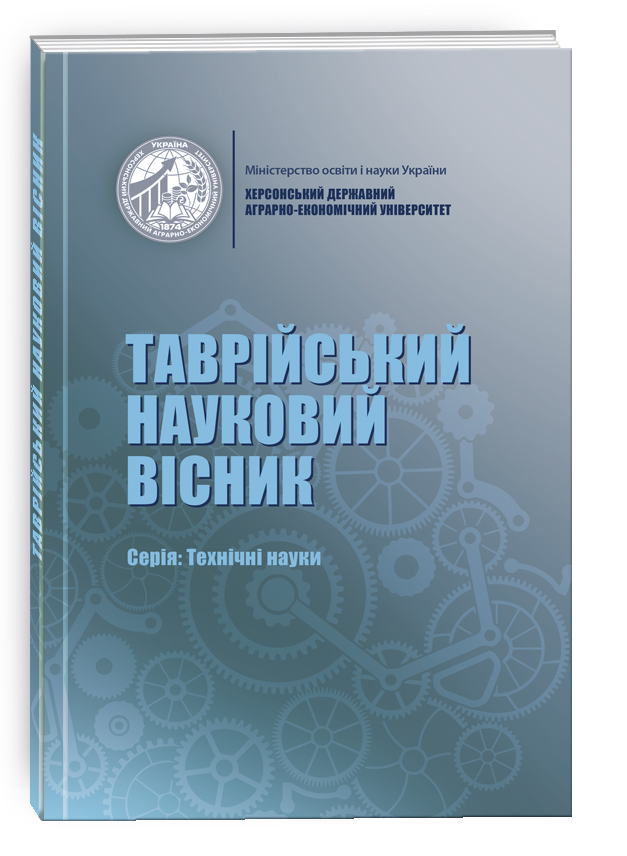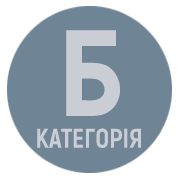USE OF ALGORITHMS FOR IMAGE ANALYSIS AND PROCESSING IN VARIOUS FIELDS, SUCH AS MEDICINE AND SECURITY
DOI:
https://doi.org/10.32782/tnv-tech.2025.1.3Keywords:
artificial intelligence, pattern recognition, machine learning, pythonAbstract
The article describes how medical image processing and security depend on deep learning methods, especially neural networks that automatically work with medical images.The purpose of the article is to create an efficient algorithm for classifying medical images, which allows for a reduction the diagnostic time and increases the accuracy of disease identification. An algorithm for medical imaging has been developed using transfer learning with convolutional neural networks (CNN) to automate the diagnostic process and improve the ability to track diseases on chest X-rays. Scientific novelty. Transfer learning is applied using a previously trained DenseNet121 model for medical image processing. The improvement is carried out by freezing the pre-trained layers, replacing the last layer with a new one corresponding to 14 classes, and using data augmentation methods to increase the generalization ability of the model.Results. The research confirmed that the DenseNet121-based model achieved 85% accuracy on the test dataset. The use of transfer learning made the training time significantly shorter, which increases the accuracy of training compared to conventional from scratch. Data augmentation, such as random rotations and horizontal mirroring, helped improve the model’s generalization performance. Optimization using Adam with a learning rate of 0.001 ensured a steady reduction in training losses.Conclusions. The proposed approach shows efficiency for medical image classification, which can significantly increase the diagnostic process and improve the accuracy of disease diagnosis. Despite the level already achieved, the model needs further improvement and training, including the expansion of the dataset and additional testing to conduct tests on different types of medical images. This research is an important step towards automating image interpretation using deep learning, which opens previously unimaginable applications of artificial intelligence in the medical and security fields.
References
Kozub Y., Kozub G. Graphic presentation of results of calculations by calculable complex “MIRELA+”.TEKA. Сommision of Motorization and Energetics in Agriculture. 2012. Vol. 12. No 3. 68-72. URL: https://dspace.luguniv.edu.ua/xmlui/ bitstream/handle/123456789/1988/Kozoob.PDF?sequence=1&isAllowed=y (дата звернення: 29.01.2025).
Козуб Г., Крутько О.O. Алгоритми компресії зображень без втрати інформації. Proceedings of the XIII International Scientific and Practical Conference. Edmonton, Canada. 2023. Pp. 510-513. URL: https://isg-konf.com/information-activity-as-a- component-of-science-development/ (дата звернення: 29.01.2025).
Яковлева І., Козуб Г. Генеративне моделювання рендериру зображень у живопис. London, United Kingdom. 2024. Pp. 319-322. URL: https://sci-conf.com. ua/v-mizhnarodna-naukovo-praktichna-konferentsiya-scientific-achievements-of-contemporary-society-5-7-12-2024-london-velikobritaniya-arhiv/ (дата звернення: 29.01.2025).
Козуб В. Ю., Могильний Г. А., Шкандибін Ю. О. Алгоритми візуалізації чисельних результатів з використанням пошарового сканування. Вісник Східноукраїнського національного університету імені Володимира Даля. Луганськ, 2014. № 5. С. 48–53. URL: https://is.gd/QXXmue (дата звернення: 29.01.2025).
Козуб В. Використання освітлення тривимірних об’єктів при візуалізації. Науковий пошук молодих дослідників (фіз.-мат. науки), ЛНУ, 2014. № 4. С. 112-116. URL: https://dspace.lgpu.org/bitstream/123456789/2205/2/Np4.pdf#page=113 (дата звернення: 29.01.2025).
Гентош Л., Мочурад Ю., Василашко Д. Паралельний аналіз медичних термографічних зображень за допомогою методу опорних векторів та Наївного Байєсівського Класифікатора. Вісник Хмельницького національного університету, 2024. Т. 333. № 2. С. 1-6. DOI: https://doi.org/10.31891/2307-5732-2024-333-2-6. URL: https://heraldts.khmnu.edu.ua/index.php/heraldts/article/view/65/88 (дата звернення: 29.01.2025).
Симонов Д., Симонов Є. Трансформація текстової інформації для автоматизації процесу постановки задач оптимізації. International scientific journal «Grail of Science». № 38. 2024. С. 224-227. DOI: https://doi.org/10.36074/ grail-of-science.12.04.2024.038. URL: https://archive.journal-grail.science/index. php/2710-3056/article/view/2257/2282 (дата звернення 29.01.2025).
Ільїна-Стогнієнко В.Ю., Лисецький Б.Л., Лойко І.І. Вплив інновацій у штучному інтелекті на ефективність діагностичних процедур в онкології. Український медичний часопис. 2024. С. 1-5. DOI: 10.32471/umj.1680-3051.167.260483. URL: https://api.umj.com.ua/wp/wp-content/uploads/2024/11/5556.pdf (дата звернення: 29.01.2025).
Зубик Л., Пужай-Череда С., Сапельников О., Калугін Д., Котляр М. Аналіз методів і алгоритмів розпізнавання та ідентифікації зображень за їх окремими фрагментами. Кібербезпека: освіта, наука, техніка. 2024. Т. 4. № 24. С. 3-9. DOI: https://doi.org/10.28925/2663-4023.2024.24.363375. URL: https://csecurity. kubg.edu.ua/index.php/journal/article/view/616/488 (дата звернення: 29.01.2025).
Кромкач В. Роль комп’ютерного зору в сучасному світі: досягнення, виклики та перспективи. Information Technology: Computer Science, Software Engineering and Cyber Security. 2024. Вип. 2. С. 79-87. DOI: https://doi.org/10.32782/IT/2024-2-10. URL: https://journals.politehnica.dp.ua/index.php/it/article/view/589/521 (дата звернення: 29.01.2025).
Сніжинський М., Січко Т. Система обробки та аналізу даних у медичній сфері на основі технологій Big Data. Комп’ютерні технології обробки даних. 2024. С. 187-189. URL: https://jktod.donnu.edu.ua/article/view/16251/16147 (дата звернення: 29.01.2025).







